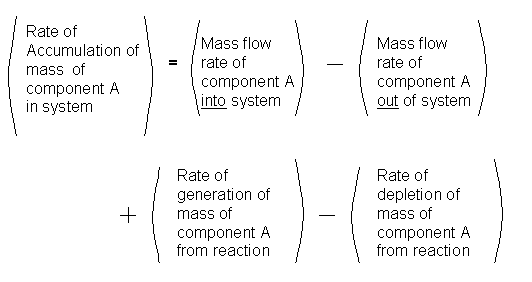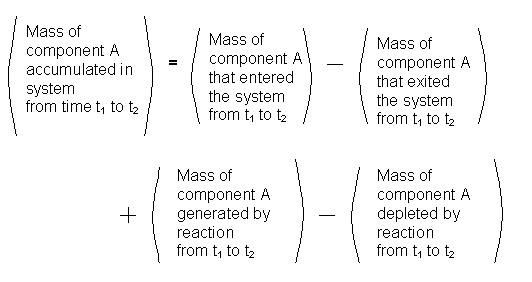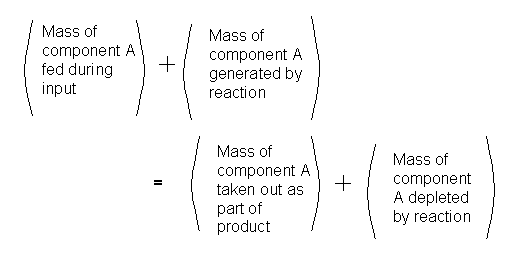MASS BALANCE ( MATERIAL
BALANCE )
(Classroom notes distributed 8/30/2002)
Types of Operation:
-
Batch Operation:
Steps:
-
Feed is charged into vessel
-
Process is started
-
No mass is added or removed from vessel ( temperature and pressure are
usually monitored and controlled )
-
At some conditions or fixed time, products are removed
-
Continuous Operation: input and output flow continuously
-
Semi-batch Operation: neither batch nor continuous
| |
Batch |
Continuous |
| Advantages |
Flexibility
Small scale |
Economical for large production |
| Disadvantages |
Cost of Startup/Shutdown |
Not as flexible |
General Balance Equation
Main Principle: mass is always conserved, i.e. mass can not be created
nor destroyed
Types of Process Condition:
-
Transient : values are changing with time
-
Steady State: values are not changing with time ( rate of accumulation
= 0 )
TOTAL MASS BALANCE EQUATION:

COMPONENT MASS BALANCE:

INTEGRAL BALANCES:
-
balance describing changes between two instants of time
-
instead of rates, the balance describes what happens to amounts of balance
quantities.
TOTAL MASS INTEGRAL BALANCE:

COMPONENT MASS INTEGRAL BALANCE:

NOTE: For a batch process, if we let t1 be the time prior
to charging the feed and let t2 be the time after all the products
are removed, then the amount accumulated is still 0. Thus in this special
case,

===============================
Flowcharts
Guidelines:
-
Understand the process
-
Be careful of the arrows
-
Take gravity into consideration
suggested conventions:
-
use x for mole or mass fraction of heavier components
-
use y for mole or mass fraction of lighter components
-
use z for mole or mass fraction of feed
-
Note that some streams do not necessarily mix (ex. heat exchangers)
Last updated 8/30/2002
Dr. Tomas B. Co
Associate Professor
Department of Chemical Engineering
Michigan Technological University
Houghton MI 49930
Click here to go back to
home page





